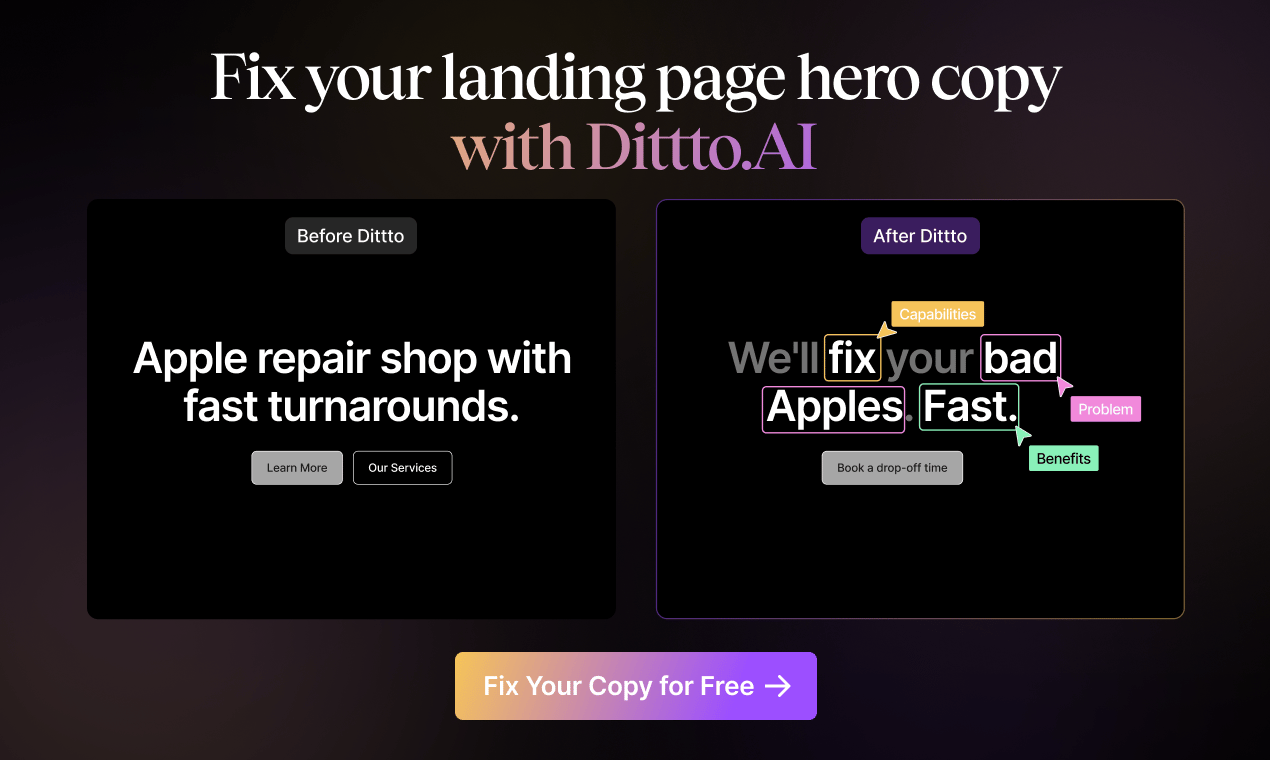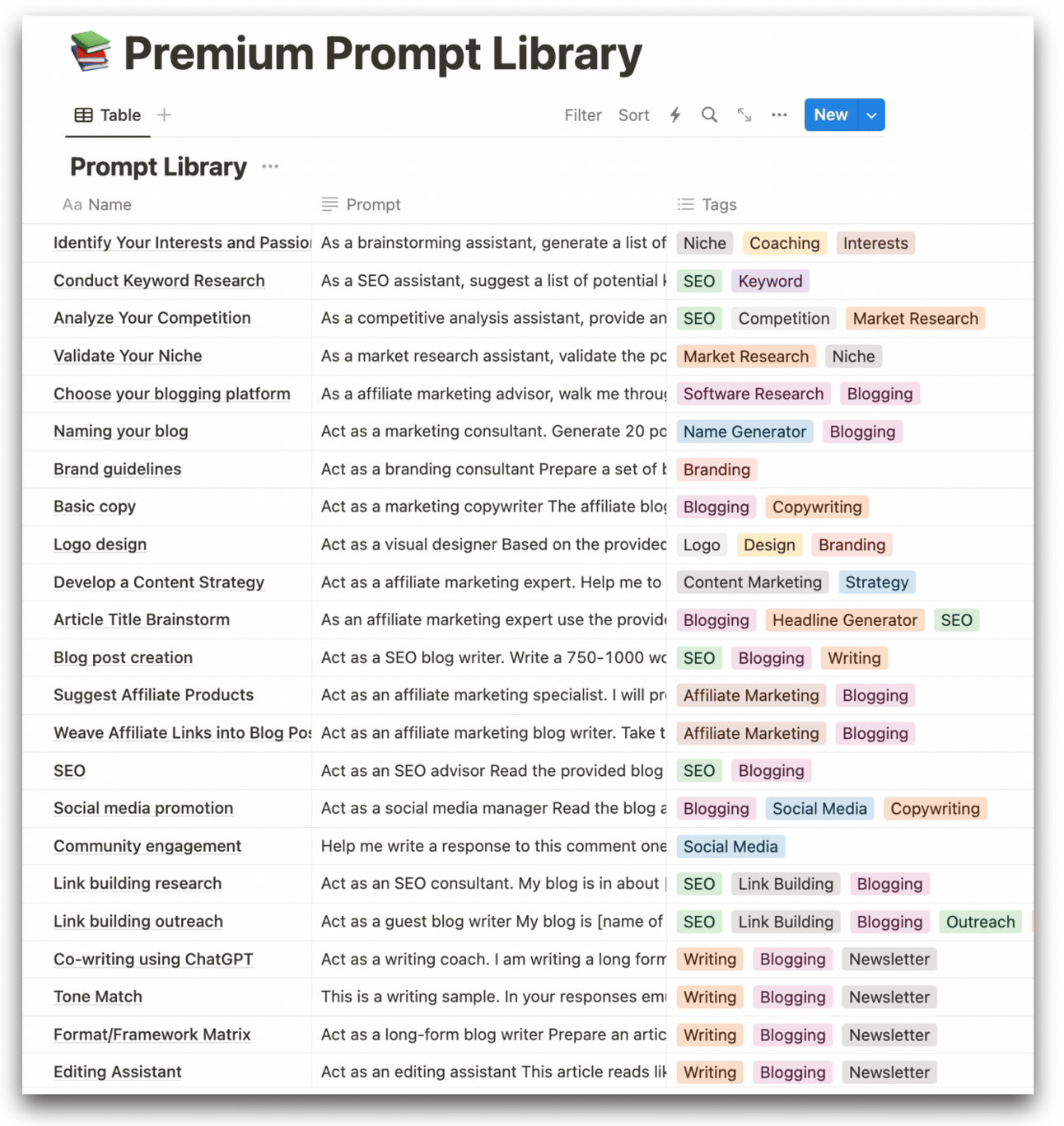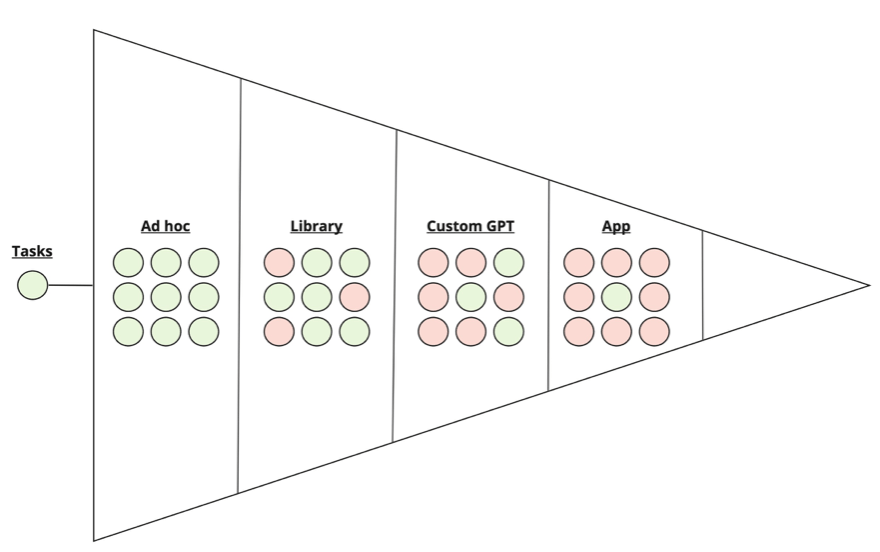Introduction
In this Part I’ll show you the foundational stage in all of your business’ use of AI.
By the end of this Part we’ll have a solid base from which to build up our business’ AI deployment.
First a word from our sponsor.
Brought to you by Dittto.AI

Fix your hero copy with an AI trained on the best landing pages. Easily generate high-conversion hero copy in a few clicks – for free.
Let’s get started:
Ad Hoc Usage
Too many businesses jump in and deploy AI without thinking.
They get sold on the latest tool. Or some slick consultant convinces they that the need to build complex apps or even their own local AI.
They might need those solutions.
But more likely the person selling them that solution is the one who will do best out of the implementation!

I instead suggest businesses and organisations start with basic ad hoc (when necessary) usage and then work bottom-up towards more complex solutions.
Here’s a chart showing the levels of AI:

Ad hoc at the bottom is how most AI starts getting used.
When you are hopping onto ChatGPT on a web browser or phone and running some prompts this is ad hoc usage
This usage is building single-use disposable prompts that we use once and then never again.
The next level up are prompts saved in a Library. These are prompts we find ourselves returning to again and again.
A good example here is the Premium Prompt library I’ve built:

If you find you are using the same library prompts again and again then we can move to the next level of AI: custom GPTs.
ChatGPT has made it relatively easy to package up our prompts as custom GPT.
Beyond this are the top levels of AI: building our own apps and even our own AIs.
How best to deploy AI
All of this starts at the same foundational level – ad hoc prompts.
When working with organisations this is how I recommend they proceed:

- Work out the most valuable tasks to automate using AI.
- Build ad hoc prompts for the tasks.
- Keep a record of the most useful prompts in a Library.
- Convert the most used Library prompts into Custom GPTs.
- Convert the most used Custom GPTs into Apps.
This comes from the bottom-up. Not from the top-down.
It’s a grassroots approach where we only develop prompts that are valuable to the business. Only prompts that have proven themselves to be useful.
Start with Ad Hoc Prompts
Before adding complexity first nail your basic prompts.
This comes from educating yourself and team members on prompt engineering – how best to communicate with AI.
I use the RISEN framework:

This is simplest with examples. I’ll keep adding additional elements of the RISEN framework.
Most people when they start to use AI will write very simplistic instruction-only prompts like:
Write a blog article on [topic]Very simple. Very basic.
With a prompt like this ChatGPT will give you a generic output. A generic blog article with very little personality. It will read like an AI wrote it!
Using the RISEN framework we can add specificity and get better outputs.
First up : ROLE.
Start your prompts with a role declaration. I use “act as xyz”. For example:
Act as an SEO blog author and write a blog article on [topic]ChatGPT can take on any role. So by giving it a specific role we are narrowing its focus. Place the Role declaration before the Instructions for best results.
Next: STEPS.
Instead of just giving ChatGPT a basic instruction like “write a blog article” you should give it the exact steps to do so. This again stops our results being generic.
For example:
Act as an SEO blog author and write a blog article on [topic]
Follow these steps:
1. Start with a hook sentence.
2. Provide 3 paragraphs with 3 main points.
3. Close the blog article with a call to action to subscribe to the newsletter. Adding in Steps will help us craft the output and make it much more specific to our needs.
Next: END GOAL.
Too often we give an AI a basic instruction and then are unhappy with the result.
This happens a lot when just starting to use tools like ChatGPT.
The problem here isn’t ChatGPT. It’s us!
We need to tell the AI what we consider a good result. ChatGPT isn’t a mind reader (yet!).
If you are unhappy with the result then make sure you’ve actually specified the result you want!
For example:
Act as an SEO blog author and write a blog article on [topic]
Follow these steps:
1. Start with a hook sentence.
2. Provide 3 paragraphs with 3 main points.
3. Close the blog article with a call to action to subscribe to the newsletter.
Desired result:
1. SEO optimised article for this keyword: [keyword]
2. Optimised for time on page - don't reveal the most exciting point until the end of the article.
3. Brand building - focus on displaying thought leadership. Provide a controversial take and back up the argument with references. Finally: NARROWING.
In this final stage we need to add tweaks to finesse our output.
Often we’ll first run the prompt a few times to see what the results are like. Then we add finesse statements at the end of the prompt to “correct” the result.
For example:
Act as an SEO blog author and write a blog article on [topic]
Follow these steps:
1. Start with a hook sentence.
2. Provide 3 paragraphs with 3 main points.
3. Close the blog article with a call to action to subscribe to the newsletter.
Desired result:
1. SEO optimised article for this keyword: [keyword]
2. Optimised for time on page - don't reveal the most exciting point until the end of the article.
3. Brand building - focus on displaying thought leadership. Provide a controversial take and back up the argument with references.
Constraints:
1. Keep the blog article between 750-1000 words
2. Use professional but human language. Avoid verboseness and floral language.
3. Do not mention competitors ABC and XYZ. So over this process of using RISEN we’ve come a long way.
Remember we started with:
Write a blog article on [topic]and compare that to the final result above. World’s apart.
Apply this framework to your prompts and you’ll see the quality increase 10 fold.
